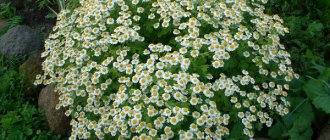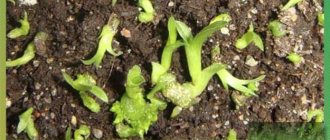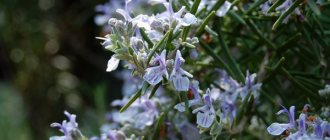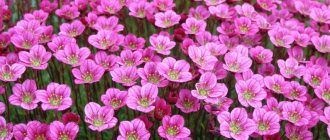Annual flowers can transform your garden into a Garden of Eden. And in order for them to delight you with their bright and interesting flowers at the height of the summer season, you must first take care of growing seedlings. Now in any garden store you can find a very wide variety of annual seeds. Let's look at what annual flowers can be sown as seedlings; names and photographs of plants await you.
Which flowers to choose for growing at home
When choosing flower seeds, you should consider several very important conditions:
- first of all, flowers, of course, should be attractive to you;
- second condition: the shape and color of the flowers should be in harmony with your home interior. Harmony always has a beneficial effect on the emotional background in the house;
- third condition: be sure to take into account the degree of illumination of the place in which the flowers will be located. It is not always possible to provide them with what they need. Therefore, when you choose seeds, carefully read the plant's light requirements.
When purchasing, pay attention to the availability of GOSTs, expiration date and manufacturer - it must be reliable.
Germination
Germinating flower seeds at home begins with soaking. This is especially important after dry heating. You need to pour water at room temperature into a flat container and place the seeds there for 1-3 days.
During soaking, the seed shell swells, and the sprouts hatch much easier and faster. The denser the seeds, the longer they need to be soaked. When soaking, the water needs to be changed after 3-4 hours.
Germinate the seeds of indoor plants in a damp cloth. Here you need to make sure that the fabric does not dry out. Immediately after the seeds hatch, they can be sown. There is no need to wait until the sprouts in the fabric grow large - they can get tangled and break off.
Preparing soil and containers for flowers
Before sowing seeds, prepare the container and soil. Clay pots perfectly allow air to pass through to the roots, but pathogenic microflora easily accumulate in them. Therefore, plastic containers are an ideal option for flowers. Rinse the containers thoroughly with hot water and baking soda and rinse with cold running water. Read on the seed packet for soil requirements. Different plants may have different requirements. But most often, ready-made soil or a mixture of sand and peat serves as excellent soil.
Cosmea
Cute multi-colored “daisies” of cosmos, or Cosmos, can often be found in home flower beds and rural front gardens. They have long won the hearts of flower lovers with their cheerful disposition, diversity and unpretentiousness.
Article on the topic
Annuals: what new varieties have appeared?
Currently, two types of cosmos can be found in our gardens. The most well-known and familiar species of cosmos bipinnatus (C. bipinnatus) forms powerful (or not so) branched bushes 50–120 cm high, with highly indented leaves and rather large inflorescences (from 5 to 12 cm in diameter) of a chamomile shape. The color of reed flowers can be white, pink, red, burgundy, the disc of tubular flowers is yellow.
Another species that appeared here relatively recently, but quickly gained popularity among gardeners, is the sulfur-yellow cosmos (C. sulphureus). It has smaller inflorescences (4–7 cm in diameter), the petals of which are slightly curved inwards in the shape of a rose and are colored yellow-orange-red. The height of the plant can be from 30 to 150 cm.
Cosmos doubly pinnate terry. Photo: AiF/ Elena Kolesnikova
Where to plant?
In terms of use in the garden, cosmos are very similar to calendula. They are grown in flowerbeds and mixborders, in the front gardens of rural houses. It is convenient to make scenes from high varieties of cosmos and decorate fences and walls of buildings with them. Low varieties, especially sulfur-yellow varieties, can be used to create borders and decorate containers and balcony boxes with them. Low, small-flowered forms of C. bipinnate are often included in annual flower (Moorish) lawns.
Cosmos is doubly pinnate, a mixture of colors. Photo: AiF/ Elena Kolesnikova
How to grow?
Cosmos bipinnate is a cold-resistant and light-loving plant, while sulfur-yellow is more thermophilic and feels good only in relatively hot summers. Both species are drought-resistant and undemanding to soils, but grow better in loose, not very nutritious soils - “overfed” plants grow powerful, but bloom poorly.
Just like calendula, cosmos is sown in open ground starting in April.
What's in a name?
Cosmos is translated from Greek as “decoration”. Indeed, the name matches the plant!
Cosmosser yellow. Photo: AiF/ Elena Kolesnikova
We germinate the seeds
To increase germination and strengthen the future plant before sowing, treat the seeds as follows: wrap them in gauze and dip them in water with an added growth stimulant. The soaking period depends on the size of the seeds - from 1 to 3 days.
Situations often arise that after planting the seeds in the ground, all the deadlines have passed, but the seedlings do not appear. To avoid this, when preparing seeds for sowing, stratify them. Simply put, put them in the refrigerator at a temperature below 5 degrees and keep them there for several days.
If the seeds have a thick seed coat, it may prevent them from germinating. In this case, soak them in water and carefully peel off the thick skin.
Dahlias
Who doesn’t know the slender beauties of dahlias (Dahlia) with huge bright inflorescences that color our gardens in late summer and autumn? True, most large-flowered varieties are perennials, and their tubers must be dug up and stored in cool rooms before the onset of cold weather. But this is not always possible, so annual dahlias can be an excellent replacement.
For a long time there was an opinion that annual dahlias are medium-sized plants with medium-sized, non-double flowers, painted in various shades of white, yellow, orange and red. People called them that – “Jolly Guys”, after the name of the most famous, ancient variety. To date, many annual dahlias have been created, which are not inferior in beauty and diversity to their perennial relatives.
Dahlia is an annual, collar-shaped inflorescence. Photo: AiF/ Elena Kolesnikova
Where to plant?
Annual dahlias are planted in flower beds, ridges, and arrays. Low varieties can be grown in containers and balcony boxes.
How to grow?
Dahlias are a rather demanding crop in terms of cultivation conditions. They are very thermophilic, love fertile, moderately moist soils and sunny, windless areas.
Dahlia annual 'Art Deco'. Photo: AiF/ Elena Kolesnikova
Seeds are sown in boxes in the first half of April, later seedlings are planted at a distance of 7–8 cm in pots or boxes. Young plants tolerate replanting well. They are planted in open ground in early June. The distance between plants depends on the variety and can be from 20 to 40 cm. It is very important to loosen the soil around the bushes in a timely manner, in hot weather - water abundantly and periodically, once every 2 weeks, feed with complex mineral or organic fertilizer. In August, feeding is stopped. Annual dahlias bloom in the first half of July and bloom profusely until the first frost.
Article on the topic
Preparing dahlias for winter
What's in a name?
Dahlias, natives of Mexico, appeared in Europe in the 18th century, where they received two names at once - dahlias and dahlias. The first of them was given in honor of the famous Swedish botanist A. Dahl. And in 1803, the German botanist K. L. Wildenov gave the plant another name - dahlia (Georgina), in honor of his friend, botanist I. G. Georgi. Both names existed together for a long time, but recently the official botanical name of the genus has become the name dalia. The name “dahlia” took root only in our country.
Sow seeds and care for crops
If the seeds are small, then they are not deepened into the soil, but only laid out on its surface. Spread them evenly and spray them with a well-dispersing spray bottle, cover with film or glass. Medium-sized planting material is planted to a depth of 1-2 mm, large - to a depth of 1-2 cm. If you follow the folk wisdom accumulated over centuries, then the depth should be equal to the diameter of the seed material.
If you soak the soil well with water before and after planting and cover it thoroughly after sowing, then watering before emergence will not be necessary. But, if the soil still becomes dry, then spray it carefully. Do not allow large amounts of condensation to accumulate on the film. Many large drops are a sign of overheating. Remove excess moisture in a timely manner and lightly ventilate the crops.
Ode to annuals
Summer residents who have recently joined the ranks of flower growers, as a rule, start with the same thing - by visiting various garden centers, Internet sites, exhibitions, and collectors' sites.
After all, there are so many interesting plants on offer (mostly perennials) that “you just can’t pass by”! An article on the topic “Who lives in the little house?” What is fashionable to plant in flowerpots
Alas, the “buying rage” is often far ahead of planning plantings and understanding which plants will actually feel good and look beautiful in your garden.
Therefore, the first advice to gardeners (and especially beginners): do not rush to immediately purchase a lot of perennial flowers! Limit yourself to those whose planting sites have already been prepared. And the craving for variety can easily be satisfied with annuals. Most of these crops are not difficult to cultivate, their range can be updated annually, thereby changing the appearance of the garden - a great help in planning! In addition, annuals are so bright and beautiful that it is difficult to imagine any garden or flower garden without them: from the simplest to the most sophisticated.
These gorgeous dahlias can be grown from seed! F1 'Hello Gorgous Shades'. Photo: AiF/ Elena Kolesnikova
Plant care
As soon as the shoots appear, remove the film or glass and open them slightly for several hours, gradually accustoming the flowers to the light and surrounding atmosphere. Some plants require picking to strengthen the root system. Their number is also different for different plants - 2-3 or 4-5. During picking, flowers are transplanted into an earthen mixture. It is more nutritious and favorable for full development. Read about the number of picks and the composition of the soil on the bag of seeds or in specialized literature.
Remember that for the first 2-3 days, pruned seedlings should not be exposed to direct sunlight and should be kept cool.
Our online store "Seeds by mail" offers you a wide selection of flower seeds that can satisfy the most varied tastes and the most varied requirements for growing conditions. We will not only send you seed material, but also provide detailed instructions on agricultural technology for any plant.
Eschszolzia
The colorful silky flowers of Californian Eschscholzia (Eschscholzia californica) are very similar to small poppies, which is why they received the popular name California poppy. The plant forms a low branched bush 15–30 cm high with numerous, rather long (up to 60 cm), lodging shoots. At the top of the shoots there are bright, shiny, large (up to 5–8 cm in diameter) single flowers: double or non-double, with smooth or corrugated petals of various colors - creamy white, yellow, orange, salmon, red. The leaves of Eschscholzia are also exceptionally elegant: strongly dissected, openwork, covered with a bluish waxy coating.
Eschscholzia Californian terry. Photo: AiF/ Elena Kolesnikova
Where to plant?
California poppy can be grown in flower beds, in flowerbeds, mixborders, made into borders, planted in spots on lawns, rock gardens, and ornamental gardens. They look beautiful in vases, containers and balcony boxes. Eschscholzia is often included in mixtures for annual flower (“Moorish”) lawns. The flowers stand well as cut flowers.
Article on the topic
Three types of late asters
How to grow?
Eschscholzia is cold-resistant, light-loving, drought-resistant and very unpretentious. Prefers dry, sunny places and does not tolerate excess moisture. Blooms better and stays compact in nutrient-poor soils. In rainy weather the flowers close.
Propagated by seeds, which are sown in early May in open ground. In areas with light soil, winter sowing can be done. It is advisable to thin out shoots that are too dense to a distance of 5–10 cm. Flowering begins in the first half of July and continues until frost. Some varieties of Eschscholzia can produce abundant self-sowing.
What's in a name?
Eschscholzia is named after Dr. I. F. Eschscholz, a natural scientist from the Baltic states who lived in 1793–1831.
Eschscholzia Californian 'Apple Blossom'. Photo: AiF/ Elena Kolesnikova
Viola Sugar Flower
Producers began to present us with the excellent gastronomic qualities of flowers. Does everyone already know that you can eat marigolds, yellow sunflower tongues and nasturtiums?
Do you know about viola? And the names are given by edible ones - Sugar flower.
Candied viola flowers are the height of culinary fashion. But simple flowers often serve as decoration mainly for sweet products (jelly, yogurt, cakes) and are added to salads. Viola tastes sweet.
To flower this year, you need to sow seedlings in March-April. When sown outdoors in June-July, it will bloom in the second year.











